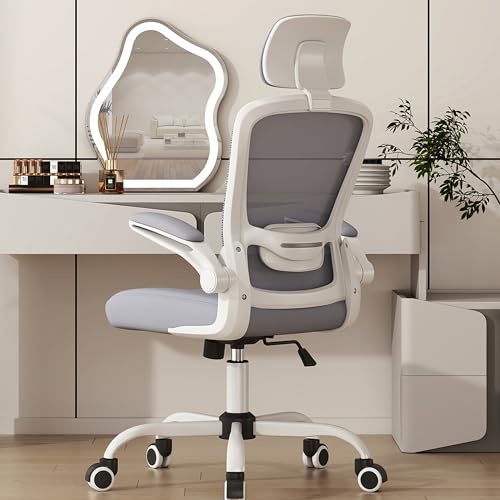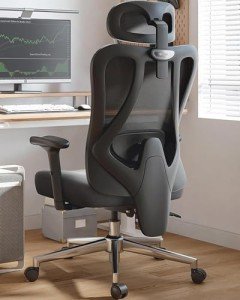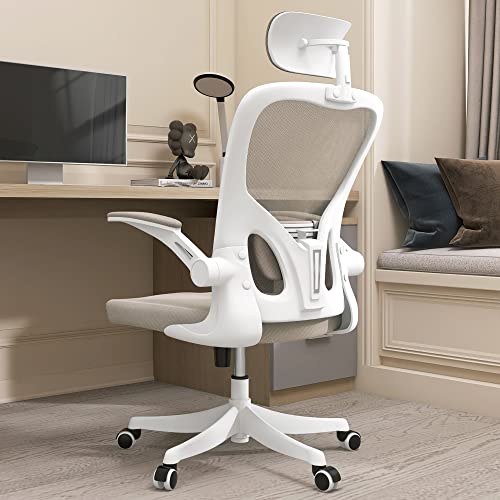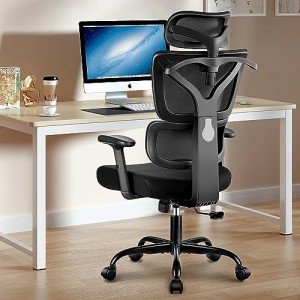Ergonomics plays a crucial role in creating a supportive workspace that promotes both comfort and productivity. When it comes to seating, understanding the principles of ergonomics can lead to significant improvements in how we feel during long hours of work. Simply put, ergonomics is about designing tasks and equipment to fit the user, minimizing discomfort and maximizing efficiency. A good ergonomic desk chair is not just about aesthetics; it should encourage proper sitting posture and support your body's natural alignment. An adjustable ergonomic chair should offer features such as adjustable seat height, backrest angle, and adjustable armrests. This customization allows each individual to find their ideal position, reducing strain on the back, neck, and shoulders. A well-designed task chair with adjustable features gives your body the ergonomic support it needs to maintain focus without the nagging discomfort that can distract from your tasks. Moreover, understanding the importance of adjustable seat depth and lumbar support office chair options can make a big difference. The seat depth should allow you to sit back comfortably while keeping your knees slightly bent. Lumbar support helps maintain the natural curve of your lower back, preventing slumping and fostering a more engaged posture. This not only promotes contoured comfort but also enhances your ability to concentrate and stay productive throughout your workday. Finally, don't underestimate the impact of taking regular breaks and changing your position. Ergonomic chairs often encourage movement, allowing you to shift your weight and change postures, which can prevent stiffness. Incorporating short breaks into your routine to stand up, stretch, or walk can further boost your comfort and productivity, making the most out of your ergonomic setup.
Key Features of Ergonomic Chairs
When it comes to enhancing your workspace, an ergonomic chair for home office use stands out for its unique design and functionality. One of the key features of these chairs is their eight points of adjustment. Users can modify aspects like adjustable seat height, adjustable armrests position, and adjustable back height to suit their individual body types. This customization helps promote a healthy posture, reducing the likelihood of discomfort during long hours of sitting. Another important feature is the lumbar support office chair provides. Many ergonomic gaming chairs come equipped with built-in support for your lower back, which is essential for maintaining proper spinal alignment. This support can alleviate pressure on the spine and help prevent back problems, allowing you to stay focused and productive throughout your workday. Many executive ergonomic chairs also incorporate breathable mesh materials and high-density cushion to enhance comfort. These materials help regulate temperature, preventing overheating, while the cushioning offers a comfortable sitting experience. A well-designed posture correcting office chair will keep you comfortable without causing fatigue, so you can concentrate on your tasks without distraction. Finally, mobility is a significant aspect of ergonomic chairs. Most are designed with wheels and a swivel base, allowing you to easily move around your workspace. This function is particularly beneficial in fast-paced office environments, where reaching for supplies or collaborating with coworkers is often necessary. Overall, these features work together to create a chair that not only supports your body but also enhances your overall productivity.
Benefits of Using Ergonomic Chairs
Ergonomic chairs are designed with your comfort and health in mind, making them an excellent investment for anyone who spends long hours sitting. One of the primary benefits is the back support they provide. Many chairs to improve posture come with adjustable lumbar support that encourages proper sitting posture, helping to prevent back pain and discomfort. This ergonomic support can significantly reduce the strain on your spine, allowing you to focus on your work rather than adjusting your seat every few minutes. Another advantage of a back pain relief chair is its ability to promote better circulation. These chairs often feature adjustable seat depth and adjustable seat height, which can help you maintain a healthy sitting position. Good circulation keeps your legs from becoming numb and reduces the risk of developing conditions like deep vein thrombosis. By ensuring your feet are flat on the ground and your knees are at a right angle, an ergonomic stool for posture facilitates a more natural alignment of your body. Additionally, productivity-enhancing seating can enhance your overall productivity. When you're comfortable, you're more likely to concentrate on your tasks without distractions from discomfort. Many ergonomic designs also allow for easy adjustments, meaning you can find the perfect setting for your body type. This customization not only makes for a more pleasant work environment but can also provide a productivity boost as you tackle your daily tasks. Lastly, using a best office chair for posture contributes to your long-term health. By prioritizing your body's comfort and support, you can avoid chronic pain issues that may arise from prolonged poor posture. Investing in a chair for good posture is taking a step towards a healthier lifestyle, encouraging you to stay active and engaged without the nagging injuries that can come from less supportive seating options.
Tips for Choosing the Right Chair
Choosing the right office chair is essential for enhancing your comfort and productivity, especially if you spend long hours seated. Start by considering the computer chair's ergonomic adjustments. Look for features like adjustable seat tilt, adjustable back height, and armrest positioning. These adjustments allow you to customize the executive chair to fit your body, promoting better posture and reducing strain. Next, pay attention to the durable materials used in the chair's construction. A good ergonomic design should have breathable mesh fabric and ample high-density cushion to ensure comfortable seating over prolonged use. Look for contract-grade build in the seat and backrest to provide support without sacrificing comfort. Additionally, make sure the chair has a sturdy frame that can withstand daily wear and tear. Don't forget to try before you buy! Whenever possible, sit in the chair and see how it feels. Check for the adjustable seat depth; your back should rest flush against the backrest while your feet remain flat on the floor. Also, consider the mobility of the task chair. A chair on wheels allows you to move around your supportive workspace easily, reducing strain as you reach for items. Lastly, consider your workspace and the chair's compatibility with it. If you work at a standing desk, ensure the chair's height matches your desk configuration to avoid awkward angles. If you have a multi-purpose area, opt for a balance ball chair or kneeling chair for posture that not only provides comfort but also complements your décor. Remember, a well-chosen chair can make all the difference in how productive and comfortable you feel throughout your day.







